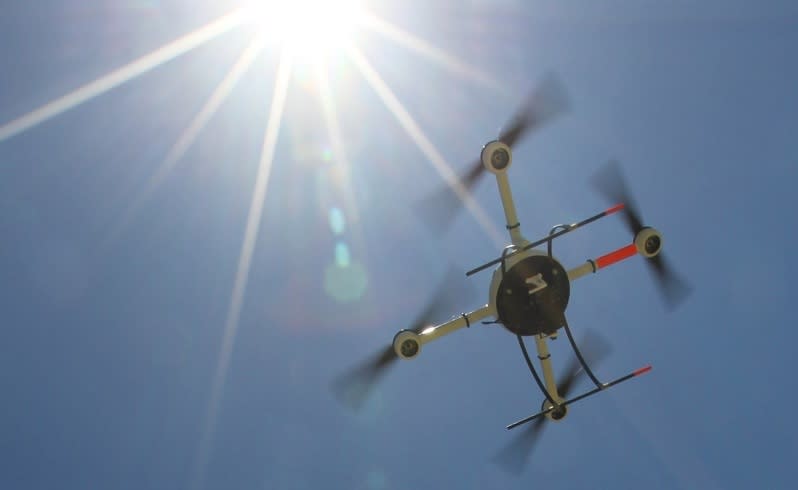Drones pose risk to firefighters
Aerial water bombing would be suspended if drones are spotted above WA bushfires this summer, robbing ground crews of vital help and potentially risking lives and property.
Department of Fire and Emergency Services aviation director Derek Parks said unmanned drones, though small, could bring down a helicopter or plane.
Pilots of the department's 22 bombers have been instructed to terminate operations if they see a drone nearby.
"That might not mean the aircraft lands immediately, it could mean they depart the area or go into a holding pattern until we're assured that drones have been removed from the airspace," Mr Parks said.
"Our aircraft are moving at 200km/h or faster so the drone is really a projectile, like a brick going through a car windscreen."
The prospect of a midair collision was first raised in WA when a water-bombing pilot saw a drone over Mt Helena during January's devastating Parkerville fires. Aerial firefighters in NSW reported four "serious incursions" with drones last summer and the issue is a hot topic in the US.
Sales of drones, many with cameras, in Australia and overseas have exploded in recent years and new technology means they are easier to fly than ever.
Mr Parks said amateur drone operators getting aerial shots of a bushfire and infiltrating DFES water bombers' airspace would be a major issue in future.
Under Civil Aviation Safety Authority regulations, unmanned aircraft must not be operated in a way that creates a hazard to another aircraft, person or property, but there are no specific laws relating to bushfires.
State firefighting agencies, including DFES, have asked CASA for a minimum 5.5km drone exclusion zone around bushfires.
"Aerial firefighting, which is close to the ground in low visibility, is dangerous enough without having drones complicate the operation and add risk to pilots," Mr Parks said.



